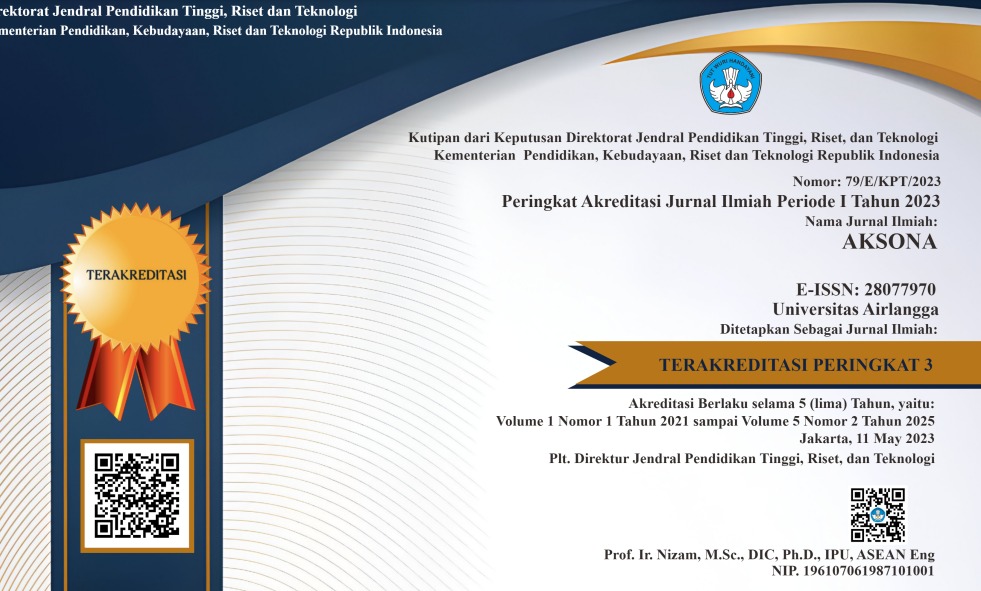HDL Cholesterol and Functional Scale Measured by the NIHSS in Acute Thrombotic Stroke Patients
Downloads
Highlight:
- Stroke is one of the leading causes of death and disability in the world.
- There is correlation between HDL cholesterol in acute thrombotic patients and the functional degree of the NIHSS.
- The lower rate of HDL cholesterol is related to the higher NIHSS score or the higher level of stroke severity.
ABSTRACT
Introduction: Stroke is one of the world's leading causes of death and disability. Acute thrombotic stroke accounts for 87% of all stroke cases. The study of the correlation between high-density lipoprotein (HDL) cholesterol levels and acute thrombotic stroke is still limited, especially on the relationship between HDL levels and the degree of functional stroke. Objective: This study aimed to prove a correlation between HDL cholesterol and the functional scale measured by the NIHSS (National Institutes of Health Stroke Scale) in acute thrombotic stroke. Methods: The design study was cross-sectional, with sampling by consecutive admission based on inclusion and exclusion criteria in the neurological ward (Seruni A) at Dr.Soetomo General Academic Hospital, Surabaya. The NIHSS was used to determine the degree of functional scale, and HDL levels were measured by enzymatic endpoint methods. Results: From the 40 subjects studied, 16 (40%) had normal HDL levels of ≥ 40 mg/dL with an NIHSS score between 0–10, and 24 (60%) had lower HDL levels of ≤ 40 mg/dL with an NUHSS score between 0–20. There were significant results in this study (r = 0.391 and p = 0.013). Conclusion: There was a negative correlation between HDL cholesterol levels and the functional scale measured by the NIHSS in acute thrombotic stroke patients.
Coupland AP, Thapar A, Qureshi MI, Jenkins H, Davies AH. The definition of stroke. J R Soc Med. 2017;110(1):9–12.
Thomalla G, Gerloff C. Treatment concepts for wake-up stroke and stroke with unknown time of symptom onset. Stroke. 2015;46(9):2707–13.
Viswanathan R, Arafath MM. Study of clinical profile of stroke in a tertiary care centre - A retrospective study. Int J Sicentific Study. 2021;8(10):182–5.
Le Danseur M. Stroke rehabilitation. Crit Care Nurs Clin North Am . 2020 ;32(1):97–108.
Hartono E, Puspitasari M, Adam O. Gambaran tekanan darah pada pasien stroke hemoragik dengan diabetes melitus dan non diabetes melitus di bagian saraf rumkital Dr. Ramelan Surabaya. J Sinaps. 2019;2(1):1–8.
Patricia H, Kembuan MAHN, Tumboimbel MJ. Karakteristik penderita stroke iskemik yang di rawat inap di RSUP Prof. Dr. R. D. Kandao Manado tahun 2012-2013. e-CliniC. 2015;3(1):445–51.
Crichton SL, Bray BD, McKevitt C, Rudd AG, Wolfe CDA. Patient outcomes up to 15 years after stroke: Survival, disability, quality of life, cognition and mental health. J Neurol Neurosurg Psychiatry. 2016;87(10):1091–8.
Putaala J. Ischemic stroke in the young: Current perspectives on incidence, risk factors, and cardiovascular prognosis. Eur Stroke J. 2016;1(1):28–40.
Boehme AK, Esenwa C, Elkind MSV. Stroke risk factors, genetics, and prevention. Circ Res. 2017;120(3):472–95.
Opoku S, Gan Y, Fu W, Chen D, Addo-Yobo E, Trofimovitch D, et al. Prevalence and risk factors for dyslipidemia among adults in rural and urban China: Findings from the China National Stroke Screening and prevention project (CNSSPP). BMC Public Health. 2019;19(1500):1–15.
Sniderman AD, Islam S, McQueen M, Pencina M, Furberg CD, Thanassoulis G, et al. Age and cardiovascular risk attributable to apolipoprotein B, low-density lipoprotein cholesterol or non-high-density lipoprotein cholesterol. J Am Heart Assoc. 2016 ;5(10):e003665.
Brites F, Martin M, Guillas I, Kontush A. Antioxidative activity of high-density lipoprotein (HDL): Mechanistic insights into potential clinical benefit. BBA Clin. 2017;8:66–77.
Papagiannis A, Gkolfinopoulou C, Tziomalos K, Dedemadi A-G, Polychronopoulos G, Milonas D, et al. HDL cholesterol efflux capacity and phospholipid content are associated with the severity of acute ischemic stroke and predict its outcome. Clin Chim Acta. 2023 ;540:117229.
Asadollahi M, Nikdokht P, Hatef B, Sadr SS, Sahraei H, Assarzadegan F, et al. Protective properties of the aqueous extract of saffron (Crocus sativus L.) in ischemic stroke, randomized clinical trial. J Ethnopharmacol. 2019 ;238:111833.
Flack JM, Adekola B. Blood pressure and the new ACC/AHA hypertension guidelines. Trends Cardiovasc Med. 2020 ;30(3):160–4.
Park C, Guallar E, Linton JA, Lee D-C, Jang Y, Son DK, et al. Fasting glucose level and the risk of incident atherosclerotic cardiovascular diseases. Diabetes Care . 2013 ;36(7):1988–93.
Dahlan MS. Statistik untuk kedokteran dan kesehatan. 5th ed. Jakarta: Salemba Medika; 2016.
Peters SAE, Huxley RR, Woodward M. Diabetes as a risk factor for stroke in women compared with men: A systematic review and meta-analysis of 64 cohorts, including 775 385 individuals and 12 539 strokes. Lancet. 2014 Jun;383(9933):1973–80.
Hamdan M, Susilo H, Sugianto P, Sani AF, Ardhi MS, Setyowatie S. Comparison of clinical severity improvement degree between acute thrombotic stroke patients with low and high matrix Metalloproteinase-9 Levels. Indian J Forensic Med Toxicol. 2020;14(2):2385–90.
Boehme AK, Siegler JE, Mullen MT, Albright KC, Lyerly MJ, Monlezun DJ, et al. Racial and gender differences in stroke severity, outcomes, and treatment in patients with acute ischemic stroke. J Stroke Cerebrovasc Dis. 2014 ;23(4):e255–61.
Lennon O, Galvin R, Smith K, Doody C, Blake C. Lifestyle interventions for secondary disease prevention in stroke and transient ischaemic attack: A systematic review. Eur J Prev Cardiol. 2014 ;21(8):1026–39.
Herrington W, Lacey B, Sherliker P, Armitage J, Lewington S. Epidemiology of atherosclerosis and the potential to reduce the global burden of atherothrombotic disease. Circ Res. 2016;118(4):535–46.
Béjot Y, Daubail B, Giroud M. Epidemiology of stroke and transient ischemic attacks: Current knowledge and perspectives. Rev Neurol (Paris). 2016;172(1):59–68.
Liu Y, Luo X, Jia H, Yu B. The effect of blood pressure variability on coronary atherosclerosis plaques. Front Cardiovasc Med. 2022;9:803810.
Chen R, Ovbiagele B, Feng W. Diabetes and stroke: Epidemiology, pathophysiology, pharmaceuticals and outcomes. Am J Med Sci. 2016;351(4):380–6.
Pasquel FJ, Tsegka K, Wang H, Cardona S, Galindo RJ, Fayfman M, et al. Clinical outcomes in patients with isolated or combined diabetic ketoacidosis and hyperosmolar hyperglycemic state: A retrospective, hospital-based cohort study. Diabetes Care. 2020 ;43(2):349–57.
Gao Z, Chen Z, Sun A, Deng X. Gender differences in cardiovascular disease. Med Nov Technol Devices. 2019;4:100025.
Yeh P-S, Yang C-M, Lin S-H, Wang W-M, Chen P-S, Chao T-H, et al. Low levels of high-density lipoprotein cholesterol in patients with atherosclerotic stroke: A prospective cohort study. Atherosclerosis. 2013;228(2):472–7.
Markaki I, Nilsson U, Kostulas K, Sjöstrand C. High cholesterol levels are associated with improved long-term survival after acute ischemic stroke. J Stroke Cerebrovasc Dis. 2014;23(1):e47–53.
Grönberg A, Henriksson I, Lindgren A. Accuracy of NIH stroke scale for diagnosing aphasia. Acta Neurol Scand. 2021 ;143(4):375–82.
Putaala J, Strbian D, Mustanoja S, Haapaniemi E, Kaste M, Tatlisumak T. Functional outcome in young adult ischemic stroke: Impact of lipoproteins. Acta Neurol Scand. 2013 ;127(1):61–9.
Tanimoto A, Mehndiratta P, Koo BB. Characteristics of Wake-up stroke. J Stroke Cerebrovasc Dis. 2014 ;23(6):1296–9
Copyright (c) 2023 Rahayu Nofita Sari, Hanik Badriyah Hidayati, Jusak Nugraha

This work is licensed under a Creative Commons Attribution-ShareAlike 4.0 International License.





















